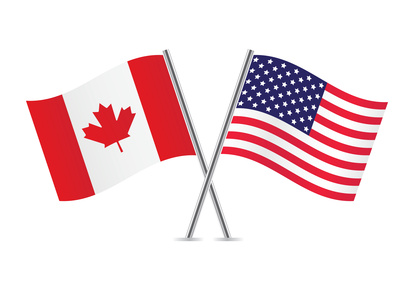
Updated 1/09/2020
Navigating The Confusing Landscape Of Distribution Statements
Have you ever been frustrated or stymied by those DoD Distribution Statements concerning Critical Technology, which appear to prohibit U.S. contractors from sharing the data with their partners in Canada? Distribution Statements are technical documents
If so, you’re not alone!
While Distribution Statements seem overwhelming, at their core these technical documents simply provide a standard framework for managing, sharing, and disseminating technical documents while adhering to DoD Directives. Since different types of products, proprietary information, and technologies are subject to different regulations, companies must meet operational use that is allowed under specific distribution statements.
Well, there is a way to work within the framework of our country’s special relationship with Canada, via the United States–Canada Joint Certification Program for Control of Unclassified Technical Data with Military or Space Application. (Try coming up with an acronym for that. Whew!)
What Is The Joint DOD Distribution Statement?
The program is under the jurisdiction of the U.S./Canadian Joint Certification Office and the Defense Logistics Information Service.
Essentially founded upon the need for both countries to protect the continent that we share and our bilateral common defense structure (i.e., NORAD), the Canadian defense industry is considered a vital part of the North American Defense Industrial Base.
Both countries signed a Memorandum of Understanding (MOU) that established the U.S.-Canada Joint Certification Program (JCP) in 1985.
This MOU is all about “Critical Technology.” Critical Technology is defined as Technologies that consist of:
- Arrays of design and manufacturing know-how (including technical data);
- Keystone manufacturing, inspection, and test equipment;
- Keystone materials; and
- Goods accompanied by sophisticated operation, application, or maintenance know-how that would make a significant contribution to the military potential of any country or combination of countries and that may prove detrimental to the security of the United States or Canada (also referred to as militarily critical technology).
Technology data can be United States Munitions List (“ITAR”) or Commerce Control List (“EAR”), depending on the platform and its end-use, and still, be considered “critical.”
While exemptions and exceptions for Canada may be used in many other cases, in lieu of licenses, always remember that such exemption/exception use must be reported annually.
“But what about those annoying Distribution Statements we’ve been seeing on USG solicitations?” Great question! DoD Distribution statements are lettered A, B, X, C, D, E, & F and reflect controls on the Critical Technology contained therein:
DISTRIBUTION STATEMENT “A”
“Approved for public release; distribution unlimited.”
DISTRIBUTION STATEMENT “X”
“Distribution authorized to U.S. Government agencies and private individuals or enterprises eligible to obtain export-controlled technical data in accordance with regulations implementing 10 U.S.C. 140c (date of determination). Other requests must be referred to (insert controlling DoD office).”
Certified contractors that are supporting U.S. Government agencies are eligible to receive unclassified documents bearing Distribution Statement “C”:
DISTRIBUTION STATEMENT “C”
“Distribution authorized to U.S. Government agencies and their contractors (reason for restriction) (date of determination). Other requests for this document shall be referred to (insert controlling DoD office).”
DISTRIBUTION STATEMENT “D”
“Distribution authorized to the Department of Defense and DoD contractors only (reason for restriction) (date of determination). Other requests shall be referred to (insert controlling DoD office).”
DISTRIBUTION STATEMENT “B”
“Distribution authorized to U.S. Government agencies only (reason for restriction) (date of determination). Other requests for this document shall be referred to (insert controlling DoD office).”
DISTRIBUTION STATEMENT “E”
“Distribution authorized to the DoD Components only (reason for restriction) (date of determination). Other requests shall be referred to (insert controlling DoD office).”
DISTRIBUTION STATEMENT “F”
“Further dissemination only as directed by (insert controlling DoD office) (date of determination) or higher DoD authority.”
If the end-use is for the U.S. or Canadian military, you should seek to use the US/Canada JCP but there are some hoops to jump through first. Registration of both the U.S. and Canadian companies with the US/Canada Joint Certification Program will be required in order to authorize distribution per the appropriate Distribution Statement. Once again: This is separate from EAR or ITAR requirements. While the requisite DD Form 2345 (certification application), is easy enough to find online, there are strict guidelines to follow to increase your chances of a successful registration.
Becoming registered is not for the feint of heart or the uninitiated, but if your business goals depend on it, becoming certified is well worth it. In short, if the above blog post interests your company, if it raises more questions for you than answers, or if you had to look up one or more of the terms we have used, you might best be served by seeking the advice of your company’s Empowered Official (EO), or some other Subject Matter Expert (SME).
If said EO or SME looks at you like your dog does when you ask it a question, then I would suggest contacting us. (We promise not to bite.)
Ray Castagnaro is a lifetime Certified Professional Contracts Manager (CPCM) and a Sr. Consultant for Export Solutions, a trade compliance firm specializing in ITAR and EAR regulations.
NOTE:
* All italics are from the DoD United States-Canada Joint Certification Program guidelines for Control of Unclassified Technical Data with Military or Space Application.
DoD F.A.Q.
Tom Reynolds is the President of Export Solutions, a consultancy firm which specializes in helping companies with import/export compliance.
